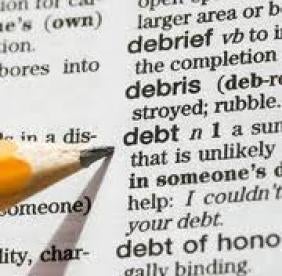For secured lenders, the single most dangerous provision of the U.S. Bankruptcy Code is section 506(c). This section permits the bankruptcy court to collect from the lender’s collateral the bankruptcy estate’s necessary expenses of preserving and disposing of the collateral, "to the extent of any benefit" to the lender.
Sometimes this works out just fine. If the value of the collateral exceeds what the lender is owed, the lender will not be out of pocket because section 506(b) of the Bankruptcy Code lets the lender add the preservation and sale expenses (and, for that matter, postpetition interest and legal fees) to its claim. Even where the lender’s claim exceeds the value of the collateral, the lender has nothing to complain about if the bankruptcy trustee promptly conducts a short sale with the lender’s consent, and then deducts sale and preservation expenses from the proceeds before turning them over to the lender. After all, absent the bankruptcy case, the lender would have had to pay the cost of conducting a foreclosure sale and preserving the property in the meantime.
But what if the bankruptcy trustee hangs onto the property to see whether it might be worth more than the lender is owed, and when the answer turns out to be "no," abandons the property to the lender? Should the secured creditor be forced to bear the trustee’s expenditures to preserve the property? For more than 30 years, the answer has been no, with one minor exception: The lender can be charged expenses for the brief period between when the trustee seeks and the court approves the abandonment. This was the holding of a Seventh Circuit case decided shortly after the Bankruptcy Code took effect, and followed by dozens of courts since then. In re Trim-X, Inc., 695 F.2d 296 (7th Cir. 1982). But late last month the Fifth Circuit ruled otherwise. Southwest Securities FSB v. Segner (In re Domistyle, Inc.), 2015 U.S. App. LEXIS 22787.
In Domistyle the bankruptcy trustee thought that the real estate was worth more than the mortgage lender was owed. For 14 months, the trustee marketed the property without success, racking up bills for security, utilities, roof repairs, lawn mowing and the like. Finally, the trustee gave up and abandoned the property to the lender. The lender agreed to pay the expenses once the trustee filed his motion for abandonment. But the trustee also sought to charge the lender for expenses of preserving the property during his unsuccessful effort to realize proceeds from the property for the benefit of unsecured creditors. The bank objected, and the issue was eventually presented to the Court of Appeals, which sided with the trustee. Rejecting Trim-X and a line of judicial decisions holding that the trustee may charge the secured lender only if the expenses were incurred primarily for the lender’s benefit, the Fifth Circuit concluded that "[t]he necessary direct relationship between the expenses and the collateral is obvious here; all of the surcharged expenses related only to preserving the value of the Property and preparing it for sale."
The court ignored a key point: The lender derived no benefit from the delay of 14 months while the trustee unsuccessfully attempted to sell the property for a premium over what the lender was owed. The court observed that "there is no indication [the lender] could have sold the Property earlier and avoided these expenses," in effect shifting from the trustee to the lender the burden of proof as to whether the lender received a benefit from the elongated sale period. Here lies the practice pointer for secured lenders in the future: Do whatever is necessary – file a motion to lift the automatic stay, if that’s what it takes – to establish in the record, that the lender seeks to and will conduct an immediate foreclosure sale. That way, if the trustee persuades the court to instead permit a more extended sale process in order to generate funds for the bankruptcy estate, even a court that follows the recent Domistyle decision rather than Trim-X ought to recognize that the lender received no benefit from expenses incurred during the sale process.




 i
i

